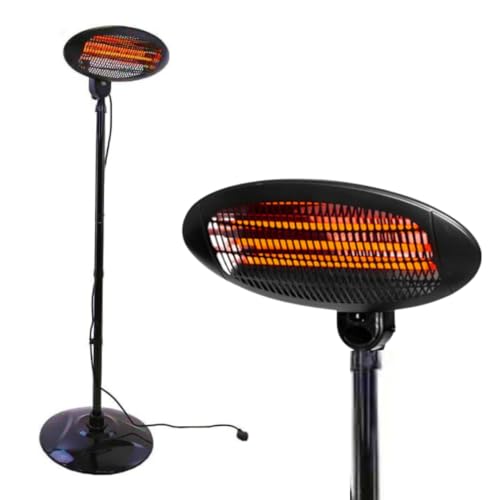How to Choose a Patio Heat Lamp Electric
When you're looking to heat your patio, you've got many options. In contrast to propane models that require refills electric heaters can provide instant heat by simply flicking the switch or pressing a button.
These units don't emit any gasses that could cause the risk of health hazards. Some units are equipped with adjustable heating settings to accommodate different distances.
Heater Type
With the right patio heater, you can relax in your outdoor living spaces into the night and throughout the seasons. There are a variety of patio heaters, including freestanding natural gas and propane models, as in addition to wall- or ceiling-mounted electric radiant heaters. Your choice will depend on the size of the area, the power sources available, and your personal preferences.
The majority of patio heaters are powered by electricity or natural or liquid gas and produce heat through convection as well as radiant heating. Their output of heat is measured in watts, and can be converted to British thermal units (BTUs) to compare. Some also have adjustable heat settings to allow for greater flexibility.
A patio heat lamp combines the burner on top of a pole with a perforated screen that is reflective of the flames and radiates the heat downward to warm people, furniture and other objects. Some models have a reflector atop the burner that can be silvered to reduce the amount of heat that is lost upwards.

The most well-known kind of patio heater that is a gas patio heater, is often seen in outdoor seating areas at bars and restaurants because they generate lots of heat quickly and distribute it evenly in all directions -- great to heat tables. These heaters are portable and can be powered by a propane tank, or they can be connected to your natural gas line. The latter is more convenient and has lower upfront costs, however it requires fuel.
A growing number of homes are equipped with natural gas lines, making these the perfect solution for those who prefer to use a gas patio heater. These heaters are easy to install, however they require a gas line that is properly installed and working to be safe. There are portable natural gas heaters that come with extension hoses that can help overcome this restriction however they can also pose a tripping risk and also a fire hazard when not being used.
Safety
Most electric patio heaters are suitable for use in covered areas due to their ability for the heat to radiate outward instead of upward toward material that is combustible, such as the roof. They are not designed to be used under a non-protected roof. The heater should be located at least 6" away from the ceiling, or 18" away from the adjacent wall to avoid fire hazards.
Patio heaters made of propane and gas are only suitable for installation in enclosed areas that are fitted with durable covers made for outdoor use. These types of covers are usually made of fire-retardant canvas and have a roof that can be closed. These types of patio heaters are prone to safety concerns relating to the fumes and flames they create. They should be placed away from objects that can ignite, such as chairs and curtains.
Follow the instructions and safety measures of the manufacturer when installing the patio heater or heat lamp. Choose a model that has UL and CSA safety certifications. Be sure to go through the owner's manual thoroughly. Make sure the heater is not within reach of pets and children. Some patio heaters that stand on their own such as EUROM's come with an automatic tipping safety that shuts off the device in the event of a fall.
If your patio heater is connected to a natural gas line, it's important to check the condition of the line on a regular basis and have it tested for leaks by a qualified professional. If the line requires to be replaced, be sure to employ a licensed plumber. A professional will be able to determine if the line has been properly routed or should be routed through an underground pipe. In electric patio heater indoors , a professional can also ensure that the heater in the patio is plugged into an outlet that is GFCI (ground fault circuit interrupter) rated to protect against electrical fires and shocks.
Installation
The height at which a patio heater is placed affects how much heat it will radiate into the area. electric outdoor heaters for patio should be placed away from surfaces such as plastic and wood that may deform. Depending on the model of heater you can decide to mount it on a structure or wall using traditional mounting brackets. Some models have a soft start, which decreases the peak current to protect your circuits.
